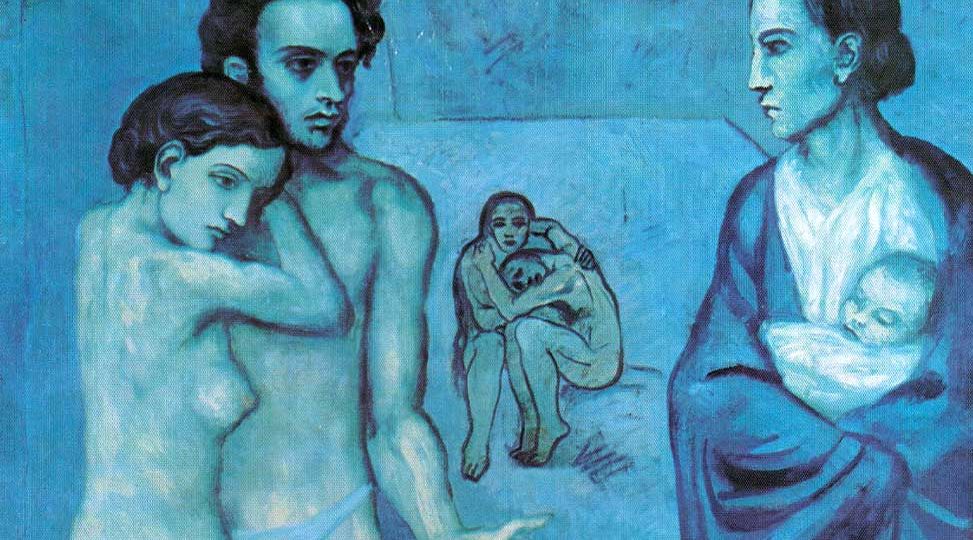
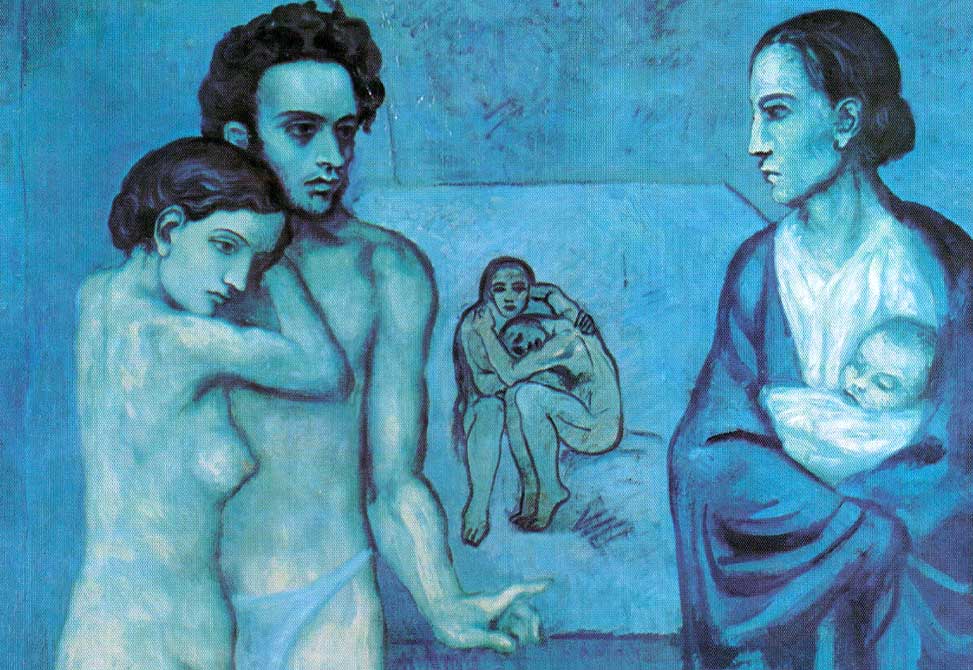
On the other hand, this impulse seems occasionally to take insufficient account of the real and profound difficulties that attend substantive type development. Jung himself was both hopeful about the prospects of such development and open-eyed about the obstacles that must be faced. He certainly believed that the psyche had a natural tendency toward integration and the bringing into consciousness of that which lies in the unconscious, but cautioned that this tendency was neither easy nor guaranteed. With respect to the individuation process, for example, Jung observed that
It is in the first place a purely natural process, which may in some cases pursue its course without the knowledge or assistance of the individual, and can sometimes forcibly accomplish itself in the face of opposition (1966, para. 186).
In the same essay, however, he remarks:
There are without doubt individuals who are not at bottom altogether viable and who rapidly perish if, for any reason, they come face to face with their wholeness. Even if this does not happen, they merely lead a miserable existence for the rest of their days as fragments or partial personalities, shored up by social or psychic parasitism (1966, para. 188).
These remarks suggest genetic, temperamental, and experiential components to individuation: that development will be easy or difficult depending on the individual, but also that many individuals will fall between such extremes, capable of development, but not inevitably predisposed to it. Given the habitual and ingrained quality of one’s preferred typological standpoint, generally anchored by one’s dominant and auxiliary functions, it is more likely than not that most individuals will find it difficult to integrate less conscious functions, and Jung’s entire career was premised on the notion that such individuals would require something like an expert intermediary to work past the blind spots of their own perspectives to a larger integrative whole.
To the degree that the type community has engendered awareness of alternative ways of encountering the world, one another, and oneself, it is engaged in a critically important service. Lest we forget, however, that the process of growth is often perilous, it is occasionally useful to remind ourselves of these perils.
Film is one cultural element that has the ability to speak to these issues in a way that “gets through” to us. John Beebe (1981) has remarked that film can be thought of as akin to Jung’s technique of active imagination, wherein the conscious mind engages in a dialogue with unconscious elements in order to bring the latter into greater conscious awareness (recognizing that ‘awareness’ is different from ‘control’). In this spirit, a recent example from the world of film might offer a useful illustration of the very real obstacles that the psyche encounters in the individuation process.
The 2006 film, Inland Empire, directed by David Lynch, is hermeneutically complex: it appears to unfold its narrative entirely from within the psyche of the protagonist, who is therefore never seen. To follow its twists and turns, the viewer has to accept its dreamlike and archetypal logic, to expect psychological rather than documentary truths. Central to this psychological logic is a series of scenes that intriguingly represents what I argue is an encounter between the superior and inferior typological functions—the Hero/Heroine and the Anima/Animus, to use John Beebe’s formulation.
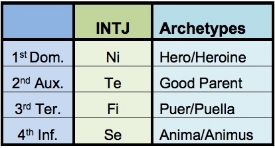
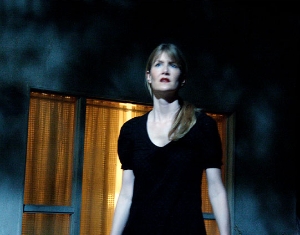
In the last third of the film, the protagonist has largely become aware of her own unreconciled nature and attempts to unite her divided self, even though the damage already done to her life is perhaps too great to fully heal.
By contrast, the central third of the film seems to be concerned with opening the protagonist’s eyes about her own self-deception. In one important strand, she comes face to face with her own Anima/Animus projection. True to Jung’s description of the Animus, this projection is multiple (see, for example, CW 7, para. 332): it is represented by a group of nine girls who are distorted embodiments of a healthy Se physicality. This projection is not, however, represented by contrasexual (male) images, as might be expected from traditional Jungian theory, but rather by female images more traditionally associated with the Anima.
A reader familiar with Jung’s conceptions of the Anima and Animus might thus be puzzled by the oddly hybridized character of this projection: multiple compensatory figures of the same gender category as the protagonist. The following points might nevertheless be offered in support of such a non-normative usage:
First, the Jungian community as a whole has become increasingly skeptical of an absolute linkage between the Anima/Animus complex and a contrasexual element. The totality of dream images in therapeutic sessions do not appear entirely to support this, except perhaps in the statistical sense of being more common. John Beebe, for example, appears to suggest that a woman might also have an Anima:
Of these feeling-toned complexes that mediate, in the regulation of psychic balance, between the Self and ego, none has such a memorable effect as the anima. (This is why so many women are not content with Jung’s insistence that their mediating figure appears as a male, the animus) (2009, p. 187).
Similarly, Andrew Samuels suggests that a modern reassessment of Jungian theory in light of culture change and gender should lead to “the idea that animus and anima exist equally for both men and women” (1985, p. 229) and that the Anima/Animus complex might best be understood in terms of “definition through difference” rather than an arbitrary contrasexuality (p. 223).
Second, Jung’s position about type and gender underwent significant change over time. In one very early formulation—around the time of the Word Association experiments—Jung considered Introversion and Thinking to be characteristic of men, while Extraversion and Feeling were feminine traits. Years of dialogue with colleagues and of wrestling with these too-simple equations resulted largely in the detachment of gender from type. Even with respect to the Anima/Animus complex, one occasionally reads Jung to work against the contrasexual paradigm, as when he writes that “in every case where the individuality is unconscious, and therefore associated with the soul, the soul-image has the character of the same sex” (1971, para. 808), where the “soul-image” is equated with the Anima/Animus complex.
Third, insofar as Inland Empire can be considered the result of a collaboration in depth between the director David Lynch and the lead actor Laura Dern, it would not be inappropriate to interpret the film’s compensatory figures poietically in light of both collaborators, a feminine Anima (Lynch) hybridized with a “multiple” Animus (Dern).
Finally, we cannot be entirely sure even of the gender identity of the protagonist in this film. Although s/he is represented largely as female, the fact remains that even this figure may be an unconscious projection, as is every character in Inland Empire at some level. As a result, the ambiguity surrounding the Anima/Animus complex is echoed at every level of the film. (In this sense, Jung’s observation above concerning those in whom even the “individuality is unconscious” seems especially apt.)
For the sake of simplicity, I will use the term “Anima” to describe this particular class of projections that appear in the film, with the hope that the reader will understand the usage in light of the above remarks.
Returning to my argument: Insofar as the protagonist (at this stage in the film, a woman named “Sue”) has been rejecting her own Se qualities, the Anima figures play out a narrative of increasing disintegration, progressively degenerative from gossipy flirts to drugged-out prostitutes. It is as if the disjunction between Sue’s ideals and her actual behavior is so great that the unconscious must resort to greater and greater measures to call her attention to this split. Lynch foregrounds this narrative of disintegration by pairing it with various popular music tracks that echo the downward spiral.
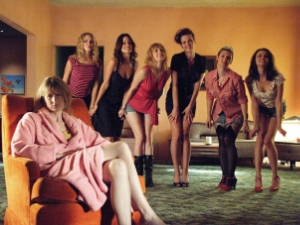
The second Anima encounter pushes further in this direction; the Anima figures have become somewhat more friendly and approachable. Now they are not nearly so sexually provocative, serving instead as confidantes. By this point in the film (1:26:27), Sue has started to remember both the damage that has been done to her life by her infidelity, by the violence of the men around her, and by her own anger. Still retaining a characteristic Se worldliness, the Nine Girls comfort Sue in the manner of high-school girlfriends (“I really thought he was the one!”), telling her that things will be better “tonight.” In keeping with this somewhat regressive adolescent fantasy, the Girls break into a choreographed rendition of the 60s dance song “The Loco-Motion.” The lyrics—“Everybody’s doing a brand new dance now; I know you’ll get to like it if you give it a chance now”—reveal that Sue is still in denial, minimizing the impact of her infidelity: “Everybody’s doing” it! As if to deny this consoling vision, then, the Girls disappear in mid-verse, leaving Sue unsettled and shaken.
Notice that the Anima is both the expression of her repressed Se qualities and a compensation for her conscious standpoint. To the degree that Sue does not acknowledge these qualities, the Anima responds with greater intensity and vividness.
The third Anima encounter, occurring a few minutes later (1:29:26), follows a crucial scene in which Sue recalls a pivotal event in her past: She reveals to her husband that she is pregnant, and he responds with shock and disbelief. This scene is one of dramatic irony: We (and she) do not yet know that her husband’s shock is due to his infertility. At this point, Sue appears also to be unaware that the child is not his. As a result, the event is interpreted differently by the two characters. Sue feels only her husband’s rejection, while her husband is unexpectedly made aware of her infidelity.
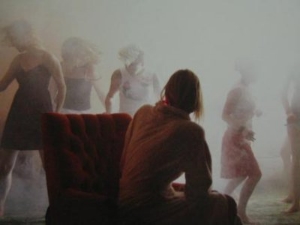
By the fourth Anima encounter (1:48:40), Sue has been forced to come to terms with her own complicity. Her initial response is disorientation and overwhelming confusion. Her Ni idealization of her circumstances, though a distortion of reality, also served as a necessary defense against the onslaught of painful emotions, reflecting the ambivalent role of all defense mechanisms. In this scene, the Anima projection is breaking down. The Girls are again dancing, but now their motions are jerky and disjointed, as though they were puppets inattentively controlled by unseen hands. Lynch’s song, “Walkin’ on the Sky,” here sounds like a distorted burlesque; a low, echoing voice sings “It’s all ass-backwards” and “The sky is on the ground.” The Girls are now unable to fully sustain themselves as psychic figures; they continue to act, but the energy holding them together is dissolving, leading us to expect a Jungian enantiodromic reversal. Indeed, in the following scene, Sue remembers how foolishly she had acted in front of her lover and his wife.
Sue is horrified by the parts of herself that she has repressed for so long. In the fifth and final Anima encounter (2:04:32), the Girls have been transformed into prostitutes walking the Los Angeles streets, filthy and desperate. “I’m a whore,” Sue says, as she for the first time confronts the fragments of her repressed inferior function. The employment of Beck’s “Black Tambourine” in the soundtrack underscores this scene, echoing the protagonist’s destitution, bewilderment, and rage: “All dressed in rag and bone … I know there’s something wrong… Might take a fire to kill it… Might take a hurricane.”
In a truly Jungian spirit, however, this moment of recognition marks the low point and begins to turn the narrative toward integration—though ultimately only a partial integration. By acknowledging her own complicity, Sue can also access empathy for the other parts of her experience that she has repressed: her victimization, helplessness, poverty, and loneliness. I have mentioned above that the film’s final hour enacts the protagonist’s efforts to see through her own self-deceptions to achieve a kind of peace.
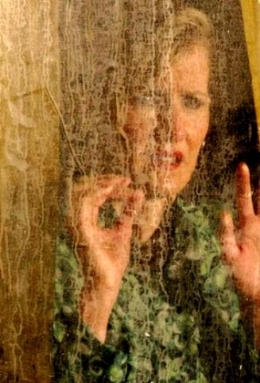
From the standpoint of type theory, this film is an illustration of how difficult and arduous the journey of self-discovery can be. Our conscious standpoint selfishly insists on its own way, despite apparently ample evidence that it is insufficient to the task. This standpoint can lead us into insuperable difficulties. And it is a denial of the power of the unconscious to believe that we can develop our inferior function in the manner of checking items off a “To Do List.” If Jung has bequeathed to us the type model, we should remember also that this model was one piece of a larger therapeutic project. The individuation of the Self is a work of a lifetime; it is full of enormous obstacles and risks, and it is not guaranteed to succeed. It is precisely because the journey can lead to such heights (and depths!) that we should not deceive ourselves about the difficulty of the climb.
References
Beebe, J. (1981). Film as active imagination. Recorded seminar, C. G. Jung Institute of San Francisco, October 10-11, 1981.
Beebe, J. (2009). The Anima in film. In V. Apperson and J. Beebe, The presence of the feminine in film. Newcastle upon Tyne, UK: Cambridge Scholars Publishing.
Jung, C. G. (1966). Two essays on analytical psychology (2nd ed.) (Hull, R.F.C., Trans.). Princeton, NJ: Princeton University Press.
Jung, C. G. (1921/1971). Psychological types (Baynes, H. G., Trans.). Princeton, NJ: Princeton University Press.
Jung, C. G. (1951/1978). Aion. (Hull, R.F.C., Trans.). Princeton, NJ: Princeton University Press.
Samuels, A. (1985). Jung and the post-jungians. London and New York: Tavistock/Routledge.
Header Image
Picasso, “La Vie,” 1903, Cleveland Museum of Art



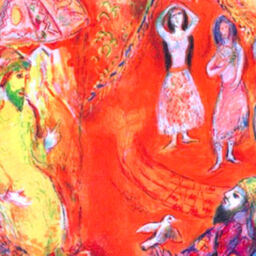

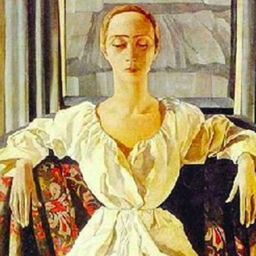



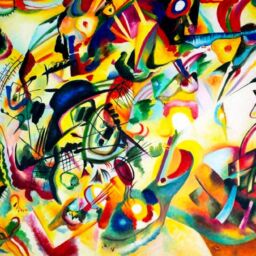


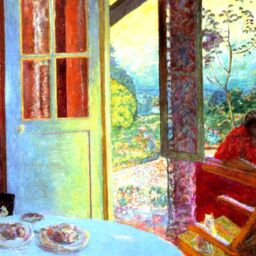
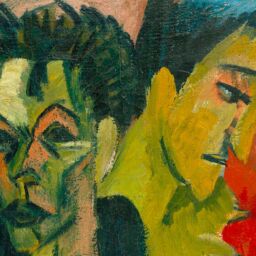




Byron,
Thanks for such an in-depth analysis of the movie as it depicts the dynamic that takes place within our psyche. The movie is now a must see for me, and you know I loathe movies. Maybe you and John Beebe are spurring me to change. -bob
Dear Byron,
Congratulations, what a great piece! Looking forward to your book for more insights already. 🙂
Particularly appreciate the reminder that just because it’s conscious doesn’t mean we can necessarily do something about it: “Not everything is solved by insight.” I do hope that the journey of becoming aware of the fragments we’re suppressing, then naming them, then perhaps accepting them, then perhaps even integrating them, does serve a greater good eventually – if not for solving a problem right in that moment, then at least it might help us grow as a person and increase our compassion towards others. Your piece illustrates the struggle and difficulty of the process really well, and serves as a great normalizer not to give up.
I wonder if you could help me understand something; where Jung is quoted “individuality is unconscious, and therefore associated with the soul” – how does Jung define the soul? I thought our individuality is our ego, and our soul is that Divine piece that connects us to everything. I.e., it may be unconscious, but it’s the opposite of individuality, it’s the Atma, the thing we all have in common.
Thank you,
Doris